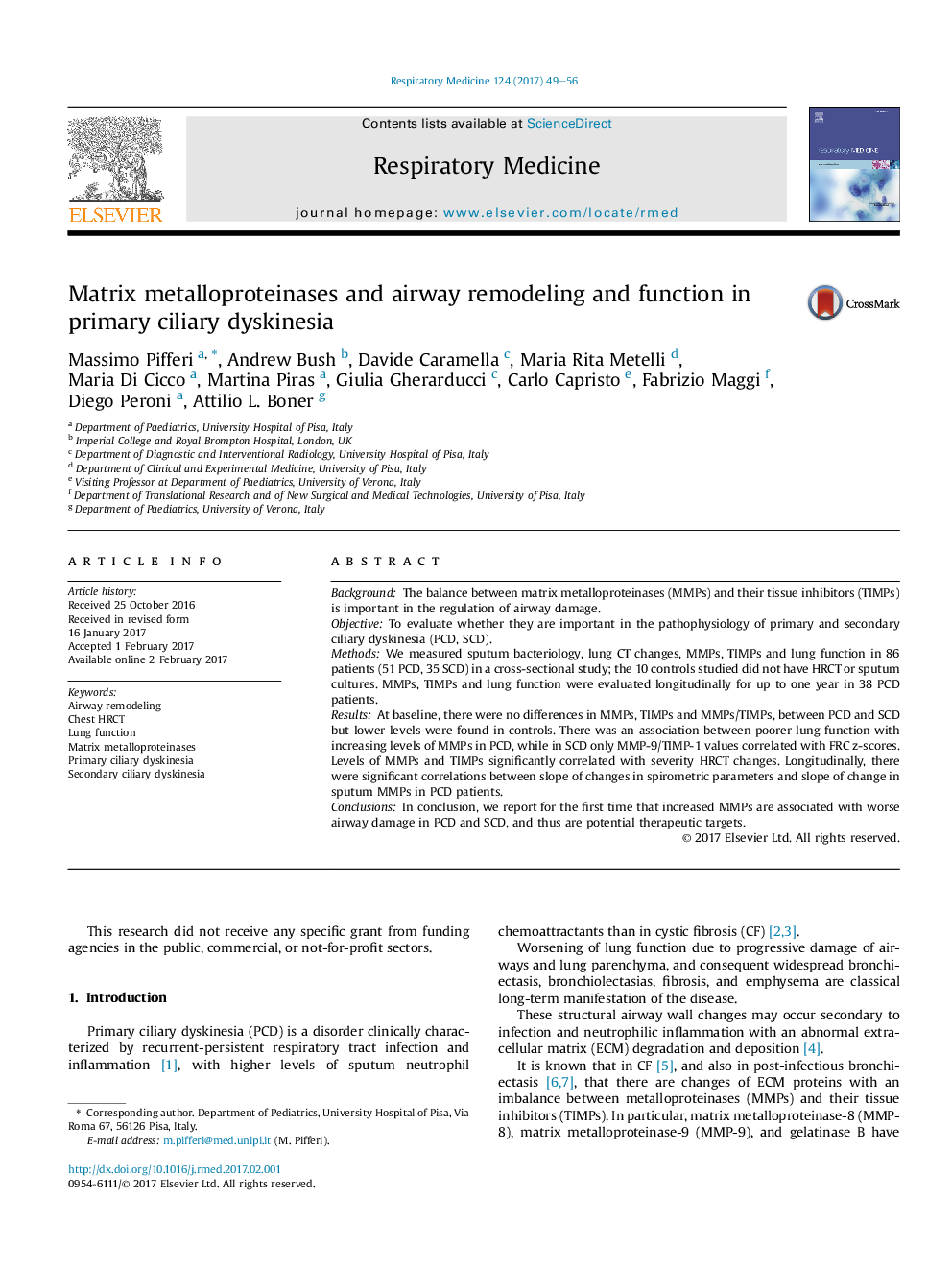| Article ID | Journal | Published Year | Pages | File Type |
|---|---|---|---|---|
| 5725049 | Respiratory Medicine | 2017 | 8 Pages |
â¢Elevated sputum levels of metalloproteinases (MMPs) have been found in primary (PCD) and secondary (SCD) ciliary dyskinesia.â¢MMPs correlated with worsening lung function and with severity of bronchiectasis.â¢PCD and SCD patients showed almost equal prevalence of reduced lung function, bronchiectasis and chronic infections.â¢These findings were observed in PCD in a longitudinal study.
BackgroundThe balance between matrix metalloproteinases (MMPs) and their tissue inhibitors (TIMPs) is important in the regulation of airway damage.ObjectiveTo evaluate whether they are important in the pathophysiology of primary and secondary ciliary dyskinesia (PCD, SCD).MethodsWe measured sputum bacteriology, lung CT changes, MMPs, TIMPs and lung function in 86 patients (51 PCD, 35 SCD) in a cross-sectional study; the 10 controls studied did not have HRCT or sputum cultures. MMPs, TIMPs and lung function were evaluated longitudinally for up to one year in 38 PCD patients.ResultsAt baseline, there were no differences in MMPs, TIMPs and MMPs/TIMPs, between PCD and SCD but lower levels were found in controls. There was an association between poorer lung function with increasing levels of MMPs in PCD, while in SCD only MMP-9/TIMP-1 values correlated with FRC z-scores. Levels of MMPs and TIMPs significantly correlated with severity HRCT changes. Longitudinally, there were significant correlations between slope of changes in spirometric parameters and slope of change in sputum MMPs in PCD patients.ConclusionsIn conclusion, we report for the first time that increased MMPs are associated with worse airway damage in PCD and SCD, and thus are potential therapeutic targets.
